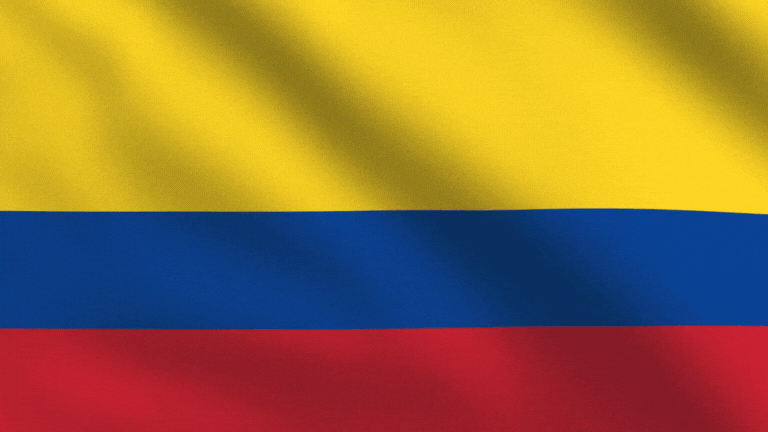Please be aware that this article may contain links to products and services we recommend. If you click on any of these links, we may earn a commission at no extra cost to you. We only endorse products and services that we believe will add value to our readers. Learn more here.
Colombia Flag: History & Symbolism
Hack The Quiz
5/8/20242 min read
This article explores the history and symbolism of the Colombia flag, explaining Colombia’s geographical location in South America and how the flag’s bold colors represent the country’s rich natural resources, independence, and national unity.
Where is Colombia?
Colombia is located in the northwestern part of South America, bordered by Venezuela to the east, Brazil to the southeast, Peru to the south, and Panama to the northwest. It has coastlines on both the Caribbean Sea and the Pacific Ocean, making it the only South American country with such geographical access. Colombia is known for its diverse landscapes, which include the Andes Mountains, Amazon rainforest, and beautiful coastlines.
Colombia declared its independence from Spain on July 20, 1810, but it wasn’t until 1819, under the leadership of Simón Bolívar, that Colombia gained full independence as part of Gran Colombia. The current Colombian flag, with its iconic tricolor design, has since become a symbol of the country’s identity, freedom, and unity.
The History of the Colombia Flag
The Colombian flag was first adopted in 1819 as the flag of Gran Colombia, a short-lived republic that included modern-day Colombia, Venezuela, Ecuador, and Panama. After the dissolution of Gran Colombia in 1831, the countries went their separate ways, but Colombia retained the tricolor design.
The flag was designed by Francisco de Miranda, a Venezuelan revolutionary who had a vision of creating a unified Latin American republic. The yellow, blue, and red colors were chosen for their symbolic representation of the land’s wealth, the seas, and the blood shed for independence.
Though the original vision of a united Latin America did not come to fruition, the Colombian flag has endured as a symbol of the country’s independence and identity. It is flown proudly on July 20, Independence Day, and during national celebrations.
Breaking Down the Colombia Flag’s Design
The flag of Colombia is a horizontal tricolor with three distinct bands—yellow on the top, followed by blue and red. Each color on the flag carries symbolic meaning tied to Colombia’s history, geography, and fight for independence.
Let’s break down the elements of the flag:
The Yellow Band
The top yellow band occupies half the flag’s height and symbolizes Colombia’s wealth, particularly its vast natural resources such as gold, fertile lands, and biodiversity. Yellow also represents the warmth of the Colombian people and the richness of the country’s cultural heritage.
The Blue Band
The blue middle band symbolizes the seas that surround Colombia—the Caribbean Sea and the Pacific Ocean. It reflects Colombia’s geographical location and its connection to the water, which has played a crucial role in the country’s trade and economy.
The Red Band
The red band at the bottom symbolizes the blood shed by the patriots who fought for Colombia’s independence from Spain. It honors the sacrifices made by the country’s heroes during the wars for independence.
The simplicity of the Colombian flag’s design is balanced by the deep meanings behind each color, making it a powerful symbol of national pride, independence, and unity.
Final Thoughts
The flag of Colombia is a striking representation of the country’s natural wealth, its geographical position, and the blood shed for independence. The yellow, blue, and red tricolor design reflects the country’s rich resources, its connection to the sea, and the sacrifices made to achieve freedom.
Since its adoption in 1819, the flag has become a lasting symbol of Colombian pride, flown during national celebrations, sporting events, and international gatherings. It stands as a reminder of the country’s rich history and its ongoing journey toward unity and progress.
Expand your mind ...
Explore trivia that broadens your understanding and knowledge of the world.
WE ARE HERE FOR YOU
JOIN US and hack the quiz
info@hackthequiz.com
© 2024. All rights reserved.



